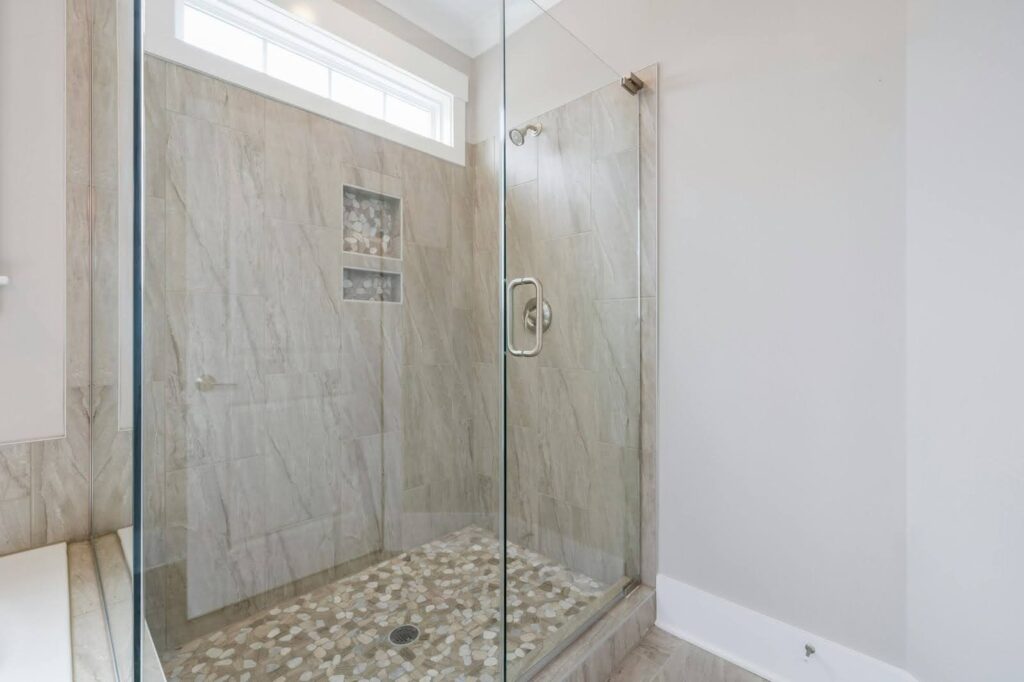Homeowners are rethinking their bathrooms for good reason. Once seen as purely functional spaces, bathrooms have evolved into personalized sanctuaries where comfort and convenience meet style. Among today’s most popular remodeling projects, tub-to-shower conversions stand out as a simple, high-impact way to modernize a home.
Whether it’s for accessibility, aesthetics, or efficiency, more people are realizing that trading a bulky tub for a sleek, walk-in shower can completely transform the look and feel of a space. It’s a renovation trend that delivers both immediate and long-term benefits.
Why Homeowners Are Saying Goodbye to the Tub
The traditional bathtub once symbolized relaxation, but lifestyles have changed. Many homeowners no longer have the time or the desire to soak in a tub after a long day. Instead, they’re prioritizing showers that are quick, convenient, and easy to maintain.
Here are a few reasons people are making the switch:
- Time-saving convenience: Showers fit better into busy routines.
- Accessibility: Step-in showers are safer and easier for all ages.
- Space efficiency: Converting a tub opens up square footage.
- Design flexibility: Walk-in showers offer endless tile and fixture options.
- Modern resale value: Buyers are drawn to updated, low-maintenance bathrooms.
According to Houzz’s 2023 U.S. Bathroom Trends Study, over 74% of homeowners chose to replace their bathtub with a shower during renovations. That statistic alone highlights a clear shift toward practicality and modern living.
The Benefits Go Beyond Looks
While aesthetics play a huge role, the advantages of a tub-to-shower conversion go far deeper than appearance. For starters, it’s one of the quickest remodeling projects you can take on. With expert installers, it’s even possible to complete the entire process in as little as a single day, minimizing disruption while maximizing results.
For example, services that specialize in quick tub-to-shower conversions help homeowners achieve dramatic upgrades without weeks of construction or mess. This efficiency has made conversions especially appealing for busy families and those managing multiple renovation projects at once.
But beyond convenience, there are practical benefits as well:
- Improved safety: No high walls to step over, reducing fall risks.
- Easier maintenance: Fewer grout lines and modern materials resist mildew.
- Better water usage: Showers often use less water than filling a tub.
- Increased accessibility: Ideal for seniors or people with mobility challenges.
- Clean, modern design: Opens up the room visually and functionally.
These advantages explain why more homeowners are viewing tub-to-shower conversions as a smart investment, not just in design, but in daily quality of life.
Space, Simplicity, and Flow
Bathrooms are often the smallest rooms in a home, which makes efficient design crucial. Traditional tubs can dominate a layout, making the space feel cramped or outdated. Removing one can instantly create better flow, more storage possibilities, and a sense of openness.
Walk-in showers also give homeowners the freedom to personalize their space. Frameless glass panels make rooms feel larger, while built-in niches and benches add both beauty and practicality. The result? A clean, spa-like environment that feels fresh, functional, and inviting.
A Step Toward Accessibility
Another major reason behind the growing popularity of tub-to-shower conversions is accessibility. As homeowners plan for aging in place or consider multigenerational living, safety becomes a top priority.
Walk-in showers eliminate the physical barrier of stepping over a tub edge. Features like grab bars, slip-resistant floors, handheld showerheads, and low thresholds can all make bathing safer without sacrificing style.
Even younger homeowners are taking a proactive approach, choosing designs that are easy to navigate now and adaptable later. It’s a subtle yet powerful way to future-proof a home.
What the Conversion Process Looks Like
If you’re wondering how complex a tub-to-shower conversion really is, the good news is: it’s simpler than most homeowners expect. In many cases, professionals can remove the old bathtub, prepare the plumbing, and install a new shower system in just one to two days.
The process generally includes:
- Assessment and design consultation – Understanding your space, needs, and goals.
- Demolition and preparation – Removing the existing tub and prepping walls.
- Plumbing adjustments – Ensuring proper drainage and water connections.
- Shower installation – Adding the base, walls, doors, and fixtures.
- Finishing touches – Sealing, caulking, and cleaning the space.
Homeowners who work with experienced remodelers often find that the convenience and speed of a conversion far outweigh the temporary disruption.
Sustainability Meets Style
Eco-conscious homeowners are also drawn to tub-to-shower conversions for their water efficiency. A full bathtub can use 35-50 gallons of water per fill, while a standard shower uses closer to 20 gallons or less, depending on the flow rate.
This difference adds up over time, not only reducing water bills but also supporting more sustainable living practices. When paired with modern, low-flow fixtures, the environmental benefits grow even more significant.
Final Thoughts
The modern bathroom is more than a functional space. It’s a reflection of lifestyle, comfort, and efficiency. Tub-to-shower conversions have emerged as one of the smartest, most transformative updates homeowners can make.
They save time, maximize space, and create a cleaner, more contemporary aesthetic, all without requiring a full-scale renovation. Whether it’s for accessibility, practicality, or simply a fresh new look, this trend proves that sometimes, the simplest changes deliver the biggest impact.

